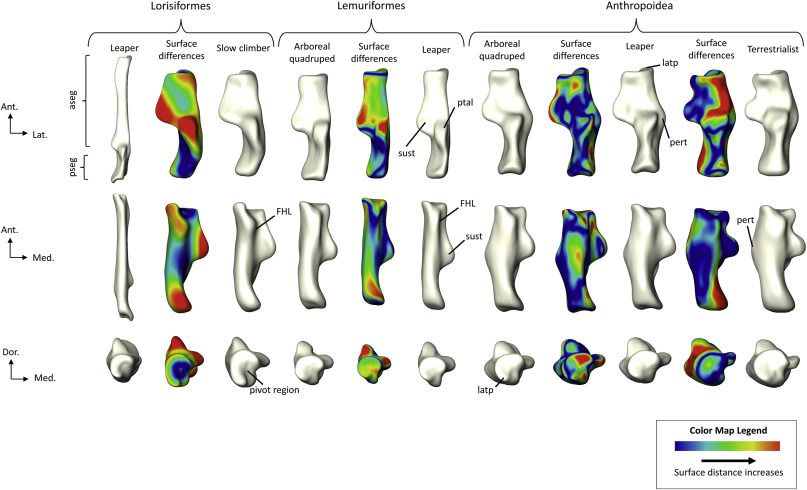
Catherine J. Llera Martín from the Sylvester Lab recently published a morphometric analysis of Euprimate tarsals from Gujarat, India with Dr. Kenneth D. Rose. Congratulations Cat!
Check it out:
A morphometric analysis of early Eocene Euprimate tarsals from Gujarat, India – ScienceDirect
https://www.sciencedirect.com/science/article/pii/S004724842200001X
Abstract
Early Eocene primate postcranial bones from the Vastan lignite mine of Gujarat, India, have proven useful for understanding the haplorhine and strepsirrhine divergence. Previous analyses of material assigned to Asiadapidae supported interpretations that these primates were generalized arboreal quadrupeds, while the omomyid Vastanomys was likely to have been more proficient leaper than asiadapids. More recent examinations of long bone cross-sectional properties and calcaneal elongation have complicated the behavioral interpretations of these fossils. This study examines whole talar and calcaneal morphology of the Vastan material to refine the locomotor reconstructions of these fossils. A comparative sample of extant primate species representing various locomotor behaviors was obtained by accessing surface models from MorphoSource.org. Surface models of fossil specimens attributed to Asiadapis cambayensis, Marcgodinotius indicus, and Vastanomys major were generated from micro-computed tomography scans. A morphological analysis was carried out using weighted spherical harmonics, a Fourier-based method that represents surfaces using coefficients associated with a common set of spherical harmonic functions. The coefficients describing each surface were then used as shape variables in a principal components analysis. Significant differences between locomotor groups were assessed using nonparametric tests. Results from extant comparative samples show that locomotor behavior can be predicted from both talar and calcaneal morphology when phylogenetic relationships are known. Consistent with previous analyses, our results indicate that Asiadapis cambayensis and Marcgodinotius indicus were likely arboreal quadrupeds with some leaping capabilities. Vastanomys major is reconstructed as an arboreal quadruped with greater leaping proficiency than its asiadapid counterparts based on its talar morphology.

